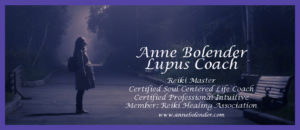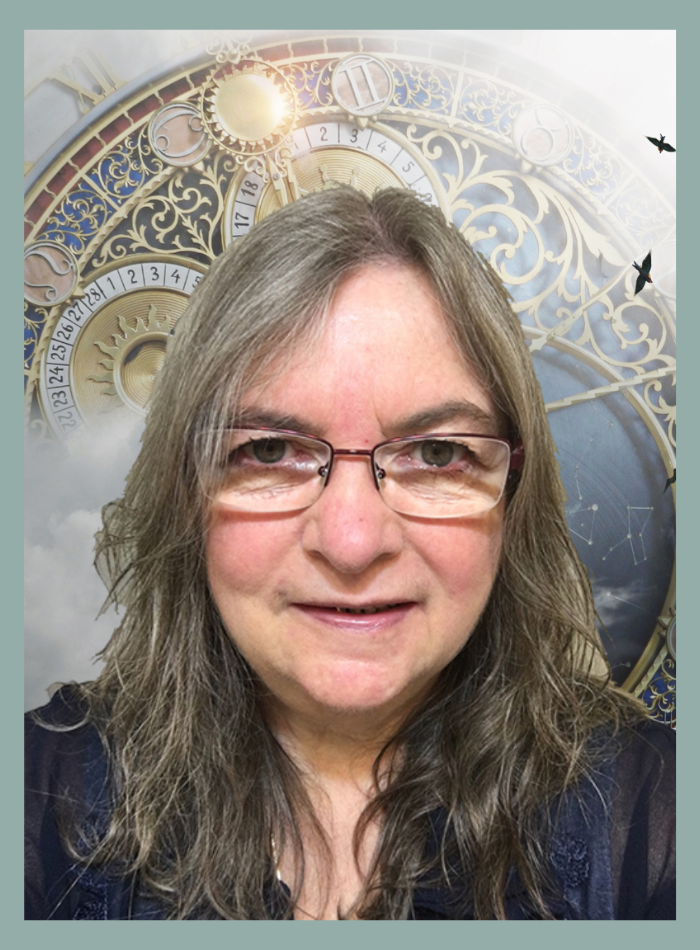
Our Identity
How do we really know who we are, what our ‘identity’ is? For that matter, how do we know who someone else is?
I can easily say and believe that my name is Anne Bolender, that I have Lupus, that I am a Lupus Life Coach, that I love to travel, etc. But if somehow something happened to me that resulted in my having amnesia, how would I know who I am, what my identity is? Am I a mother? A Wife? What activities do I love participating in? Do I have any illnesses? How do these illnesses impact my life?, etc.
This might sound like a frivolous question, but, by knowing how we know who we are, we can easily use those sources to change our identity when we want to, to what we want it to be.
In fact, everyone goes through several identity shifts throughout their lifetime – it’s just that we don’t normally do these shifts consciously. Examples of some basic identity shifts include shifting from an child to a teen; from a teen to an adult; from a student to an employee; from living at home to living independently; from being single to being married, to being a parent, to being retired, etc. With each of these shifts, we shed the identity of who we were and adopt the new identity of who we have become. These new identities may be awkward at first, but we grown into them and accept them through the sources/activities discussed below.
While we are aware that these shifts are taking place, we tend not to consciously create our new identities, they just kind of evolve. Sometimes these new identities just don’t feel right. I’ve been married for over 20 years now and to this day I still don’t like being called by my married name because that identity doesn’t fit well with me. I am sort of getting used to that identity, but I still feel like an imposter when someone calls me by my married name! I am definitely far more comfortable and confident using the last name I grew up with.
Identity Shifting – Internal Sources
Identity shifting is all about recognizing what our current identity is (how we see ourselves) and then consciously shifting that vision to be more in line with the identity we want to have.
For example, if you see yourself as a victim of Lupus where Lupus controls your life, then you might  want to consciously shift that identity to one where you and Lupus are partners in your life, or one where you are a Lupus Warrior subduing your arch nemesis.
want to consciously shift that identity to one where you and Lupus are partners in your life, or one where you are a Lupus Warrior subduing your arch nemesis.
Techniques for Shifting Your Identity
The first thing you need to do in order to consciously shift your identity is to identify the “who” that you want to become. Create a profile of the ‘new you’. Who is she? What is her life like? What does she love to wear, eat, read? What is her hair, jewellery, furniture, car, like? Does she have any hobbies, friends, pets? Does she work? Does she own a business? What is her health, fitness, over all wellbeing like? Make a list of the characteristics and attributes you want your new identity to have and describe them in detail. I’ve even used pictures that I’ve found in magazines or online to help me really get to know this new identity.
Once you have a profile that feels good to you, it’s time to start incorporating this new identity into your life, and this can be done well before you are actually fully living this new identity.
One way to start this identity shifting process is to use the profile you created on the new you and begin creating a journal of what your days would look like if you were living this new identity. This is like creating a regular daily journal of what your life is currently like, only instead of journaling about your current life, you are journaling as if you were living your new identity. Nothing you write needs to be real so use your imagination to create the biggest, boldest, most abundantly fulfilling new identity as you want – no limits, no boundaries. This journal is all about you creating the identity and living the life you want to want to live.
Once you have your new identity profile created, then the magic of the shifting comes through from four internal sources:
1) Who you say you are, to yourself and to others. My identity shift started with my saying “I am a powerful Reiki healer and Soul-Centered Life Coach in high demand”. I said this affirmation over and over again to myself, out loud and by writing it down. But it was more than just saying this kind of statement, it’s actually believing what I am saying.
2) Who you think you are. Self-talk is really important. If your self-talk is constantly thinking of yourself and referring to yourself as a victim of Lupus (or unable to work, or unable to live a normal life, or unable to be active) but you are saying that you are a partner with Lupus, your identity will remain that of a victim. Your mind will continually be searching for information that verifies your identity as a victim and will not identify ways in which you and Lupus can be partners in your life.
3) How you feel. Are you feeling confident with your new identity? Are you feeling like an entrepreneur, or a full-time employee, or an active person, or whatever your new identity is? One way to keep focused on how would feel in your new identity is to constantly ask yourself “How would an active person, or an entrepreneur, or someone living their best good life., etc. feel about this situation?”
4) What you do. To begin to really stepping into your new identity now instead of waiting for your life to actually change, is to begin acting as if you were that person now. What foods would that person eat? Can you start eating that way now? What clothes would that person wear? Can you begin dressing that way now? What would that person’s day look like? Can you begin actually incorporating parts of that day into your life now?
 Once you begin incorporating those four activities into your life (what you say, what you think, what you feel, and what you do), you will gradually find that your identity will begin to shift away from your current identity towards the new identity that you want to live.
Once you begin incorporating those four activities into your life (what you say, what you think, what you feel, and what you do), you will gradually find that your identity will begin to shift away from your current identity towards the new identity that you want to live.
The identity shifting activities that are identified above, are all internal activities focused on shifting the way you identity who you are from the inside out. My next blog post (to be published on Thursday) will explore some of the external activities you can use to reinforce the identity shift you are experiencing.
In the meantime, give these internal activities a try and see if you experience any shifts.
As always, if you have any questions or comments, please feel free to send an email to me at info@annebolender.com.




